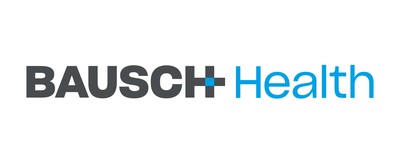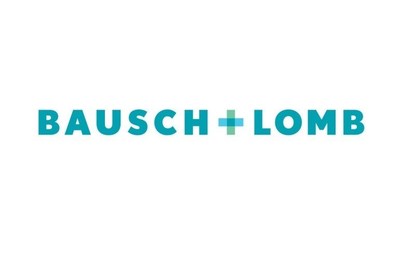Bausch + Lomb Announces New Scientific And Clinical Analyses To Be Presented During The American Academy Of Ophthalmology And American Academy Of Optometry Annual Meetings
BRIDGEWATER, N.J., Oct. 7, 2019 /PRNewswire/ -- Bausch + Lomb, a leading global eye health company and wholly owned subsidiary of Bausch Health Companies Inc. (NYSE/TXS: BHC), today announced that 14 new scientific poster and clinical presentations involving the company's products, as well as data from the company's Antibiotic Resistance Monitoring in Ocular MicRoorganisms (ARMOR) surveillance study, will be presented during the Annual Meetings of the American Academy of Ophthalmology and American Academy of Optometry in San Francisco (Oct. 12-15, 2019) and Orlando (Oct. 26-30, 2019), respectively.
"Bausch + Lomb is committed to supporting research designed to generate learnings about our products as well as broader insights for the eye health community – such as the unique ARMOR surveillance study," said Joe Gordon, U.S. president, Bausch + Lomb. "We invite eye care professionals attending both meetings to learn more about the results of these data to help inform them how they can better address the needs of their patients."
The full schedule of all scientific poster and clinical presentations that will include Bausch + Lomb products and the ARMOR study results is as follows:
American Academy of Ophthalmology
- Asbell, P et al. "Ten-Year Antibiotic Resistance Trends From Ocular Pathogens Collected in the ARMOR Surveillance Study." Saturday, Oct. 12, 2019 at 9:00 a.m. to Tuesday, Oct. 15, 2019 at 1:00 p.m.
- DeCory H et al. "Antibiotic Resistance Among Intraocular Bacterial Pathogens Collected Over 10 Years in ARMOR." Saturday, Oct. 12, 2019 at 9:00 a.m. to Tuesday, Oct. 15, 2019 at 1:00 p.m.
- Harasymowycz, P et al. "Effectiveness of Latanoprostene Bunod in Treating OAG and OHT: Network Meta-analysis." Saturday, Oct. 12, 2019 at 9:00 a.m. to Tuesday, Oct. 15, 2019 at 1:00 p.m., also available as part of e-poster discussion session on Sunday, Oct. 12, 2019 from 12:15-12:45 e-poster Lounge, Station 3
- Liang, E et al. "Retinal Image Simulations of Aspheric IOLs With Nominal Tilt and Decentration." Saturday, Oct. 12, 2019 at 9:00 a.m. to Tuesday, Oct. 15, 2019 at 1:00 p.m.
- Packer, M et al. "Optimizing Refractive Outcomes With a New Vergence-Based Algorithm for a Neutral Aspheric Monofocal Toric IOL." Saturday, Oct. 12, 2019 at 9:00 a.m. to Tuesday, Oct. 15, 2019 at 1:00 p.m., also available as part of e-poster discussion session on Monday, Oct. 14, 2019 from 1:15-2:15 p.m., e-poster Lounge, Station 5
- Pizio, H et al. "Energy-Fluid Metrics Analysis of Patients Undergoing Vacuum-Based Phacoemulsification From Cloud-Based Database." Saturday, Oct. 12, 2019 at 9:00 a.m. to Tuesday, Oct. 15, 2019 at 1:00 p.m.
- Rocha, K. et al. "Analysis of Static and Dynamic Factors Associated With Pseudoaccommodation in Monofocal IOLs." Friday, Oct. 11, 2019 at 7:00 a.m. to Tuesday, Oct. 15, 2019 at 1:00 p.m.
- Stephenson, Dee G et al. "Retinal Image Simulations of Aspheric Toric IOLs Under Conditions of Tilt and Decentration." Saturday, Oct. 12, 2019 at 9:00 a.m. to Tuesday, Oct. 15, 2019 at 1:00 p.m.
American Academy of Optometry
- Cavet M et al. "Loteprednol Etabonate (Submicron) 0.38% Gel for the Reduction of Inflammation and Pain following Cataract Surgery: Integrated Analysis of Three Phase 3 Studies." Poster #42, Exhibit Hall WD1, Orange County Convention Center, Thursday, Oct. 24, 2019 from 4:30 to 6:30 p.m. ET.
- DeCory H et al. "Real-world Persistence with Latanoprostene Bunod Ophthalmic Solution 0.024%: Analysis of Patient Longitudinal Data." W224 ABC, Orange County Convention Center, Friday, Oct. 25, 2019 at 2:00 p.m. ET.
- Rah M et al. "Identifying Opportunities for Contact Lens Wear Through Challenges Experienced by Presbyopic Astigmatic Patients Wearing Spectacles." Poster #50, Exhibit Hall WD1, Orange County Convention Center, Friday, Oct. 25, 2019 from 9 a.m. to 3 p.m. ET.
- Reindel WT et al. "Progressive Multifocal Contact Lenses for the Astigmatic Presbyope: A Comparison of Power Profiles Across Near, Intermediate and Distance Zones." Poster #51, Exhibit Hall WD1, Orange County Convention Center, Friday, Oct. 25, 2019 from 9 a.m. to 3 p.m. ET.
- Sanfilippo C et al. "Antibiotic Resistance Rates Among Bacterial Pathogens Collected from the Cornea in ARMOR." Poster #54, Exhibit Hall WD1, Orange County Convention Center, Thursday, Oct. 24, 2019 from 4:30 to 6:30 p.m. ET.
- Sanfilippo C et al. "Antibiotic Resistance Trends Among Ocular Pathogens in the United States: Ten-Year Results from the ARMOR Study." Poster #55, Exhibit Hall WD1, Orange County Convention Center, Thursday, Oct. 24, 2019 from 4:30 to 6:30 p.m. ET.
Important Safety Information for BESIVANCE® (besifloxacin ophthalmic suspension) 0.6%
Indication
BESIVANCE® (besifloxacin ophthalmic suspension) 0.6% is a quinolone antimicrobial indicated for the treatment of bacterial conjunctivitis caused by susceptible isolates of the following bacteria: Aerococcus viridans*, CDC coryneform group G, Corynebacterium pseudodiphtheriticum*, Corynebacterium striatum*, Haemophilus influenzae, Moraxella catarrhalis*, Moraxella lacunata*, Pseudomonas aeruginosa*, Staphylococcus aureus, Staphylococcus epidermidis, Staphylococcus hominis*, Staphylococcus lugdunensis*, Staphylococcus warneri*, Streptococcus mitis group, Streptococcus oralis, Streptococcus pneumoniae, Streptococcus salivarius*
*Efficacy for this organism was studied in fewer than 10 infections.
Important Safety Information
- BESIVANCE® is not for injection into the eye.
- As with other anti-infectives, prolonged use of BESIVANCE® may result in overgrowth of non-susceptible organisms, including fungi. If super-infection occurs, discontinue use and institute alternative therapy.
- Patients should not wear contact lenses if they have signs or symptoms of bacterial conjunctivitis or during the course of therapy with BESIVANCE®.
- The most common adverse event reported in approximately 2% of patients treated with BESIVANCE® was conjunctival redness. Other adverse events reported in patients receiving BESIVANCE® occurring in approximately 1-2% of patients included: blurred vision, eye pain, eye irritation, eye pruritus and headache.
- Safety and effectiveness in infants below one year of age have not been established.
Click here for full Prescribing Information for BESIVANCE®.
Important Safety Information for VYZULTA® (latanoprostene bunod ophthalmic solution), 0.024%
INDICATION
VYZULTA® (latanoprostene bunod ophthalmic solution), 0.024% is indicated for the reduction of intraocular pressure (IOP) in patients with open-angle glaucoma or ocular hypertension.
IMPORTANT SAFETY INFORMATION
- Increased pigmentation of the iris and periorbital tissue (eyelid) can occur. Iris pigmentation is likely to be permanent
- Gradual changes to eyelashes, including increased length, increased thickness, and number of eyelashes, may occur. These changes are usually reversible upon treatment discontinuation
- Use with caution in patients with a history of intraocular inflammation (iritis/uveitis). VYZULTA should generally not be used in patients with active intraocular inflammation
- Macular edema, including cystoid macular edema, has been reported during treatment with prostaglandin analogs. Use with caution in aphakic patients, in pseudophakic patients with a torn posterior lens capsule, or in patients with known risk factors for macular edema
- There have been reports of bacterial keratitis associated with the use of multiple-dose containers of topical ophthalmic products that were inadvertently contaminated by patients
- Contact lenses should be removed prior to the administration of VYZULTA and may be reinserted 15 minutes after administration
- Most common ocular adverse reactions with incidence ≥2% are conjunctival hyperemia (6%), eye irritation (4%), eye pain (3%), and instillation site pain (2%)
Please see full prescribing information at www.bausch.com/vyzulta.
Important Safety Information for LOTEMAX® SM (loteprednol etabonate ophthalmic gel) 0.38%
INDICATION
LOTEMAX® SM (loteprednol etabonate ophthalmic gel) 0.38% is a corticosteroid indicated for the treatment of post-operative inflammation and pain following ocular surgery.
IMPORTANT SAFETY INFORMATION
- LOTEMAX® SM, as with other ophthalmic corticosteroids, is contraindicated in most viral diseases of the cornea and conjunctiva including epithelial herpes simplex keratitis (dendritic keratitis), vaccinia, and varicella, and also in mycobacterial infection of the eye and fungal diseases of ocular structures.
- Prolonged use of corticosteroids may result in glaucoma with damage to the optic nerve, defects in visual acuity and fields of vision. Steroids should be used with caution in the presence of glaucoma. If LOTEMAX® SM is used for 10 days or longer, IOP should be monitored.
- Use of corticosteroids may result in posterior subcapsular cataract formation.
- The use of steroids after cataract surgery may delay healing and increase the incidence of bleb formation. In those with diseases causing thinning of the cornea or sclera, perforations have been known to occur with the use of topical steroids. The initial prescription and renewal of the medication order should be made by a physician only after examination of the patient with the aid of magnification such as slit lamp biomicroscopy and, where appropriate, fluorescein staining.
- Prolonged use of corticosteroids may suppress the host response and thus increase the hazard of secondary ocular infections. In acute purulent conditions, steroids may mask infection or enhance existing infections.
- Employment of a corticosteroid medication in the treatment of patients with a history of herpes simplex requires great caution. Use of ocular steroids may prolong the course and may exacerbate the severity of many viral infections of the eye (including herpes simplex).
- Fungal infections of the cornea are particularly prone to develop coincidentally with long-term local steroid application. Fungus invasion must be considered in any persistent corneal ulceration where a steroid has been used or is in use. Fungal cultures should be taken when appropriate.
- Contact lenses should not be worn when the eyes are inflamed.
- There were no treatment-emergent adverse drug reactions that occurred in more than 1% of subjects in the three times daily group compared to vehicle.
You are encouraged to report negative side effects of prescription drugs to the FDA. Visit www.fda.gov/medwatch or call 1-800-FDA-1088.
Click here for full Prescribing Information for LOTEMAX® SM.
About Bausch + Lomb
Bausch + Lomb, a wholly owned subsidiary of Bausch Health Companies Inc., is a leading global eye health organization that is solely focused on helping people see better. Its core businesses include over-the-counter products, dietary supplements, eyecare products, ophthalmic pharmaceuticals, contact lenses, lens care products, ophthalmic surgical devices and instruments. Bausch + Lomb develops, manufactures and markets one of the most comprehensive product portfolios in the industry, which is available in more than 100 countries. For more information, visit www.bausch.com.
About Bausch Health
Bausch Health Companies Inc. (NYSE/TSX: BHC) is a global company whose mission is to improve people's lives with our health care products. We develop, manufacture and market a range of pharmaceutical, medical device and over-the-counter products, primarily in the therapeutic areas of eye health, gastroenterology and dermatology. We are delivering on our commitments as we build an innovative company dedicated to advancing global health. More information can be found at www.bauschhealth.com.
Forward-looking Statements
This news release may contain forward-looking statements which may generally be identified by the use of the words "anticipates," "expects," "intends," "plans," "should," "could," "would," "may," "will," "believes," "estimates," "potential," "target," or "continue" and variations or similar expressions. These statements are based upon the current expectations and beliefs of management and are subject to certain risks and uncertainties that could cause actual results to differ materially from those described in the forward-looking statements. These risks and uncertainties include, but are not limited to, risks and uncertainties discussed in Bausch Health's most recent annual or quarterly report and detailed from time to time in Bausch Health's other filings with the Securities and Exchange Commission and the Canadian Securities Administrators, which factors are incorporated herein by reference. Readers are cautioned not to place undue reliance on any of these forward-looking statements. These forward-looking statements speak only as of the date hereof. Bausch Health undertakes no obligation to update any of these forward-looking statements to reflect events or circumstances after the date of this news release or to reflect actual outcomes, unless required by law.
®/TM are trademarks of Bausch & Lomb Incorporated or its affiliates.
Any other product/brand names are trademarks of the respective owners.
© 2019 Bausch & Lomb Incorporated or its affiliates.
MTB.0448.USA.19
SOURCE Bausch Health Companies Inc.





